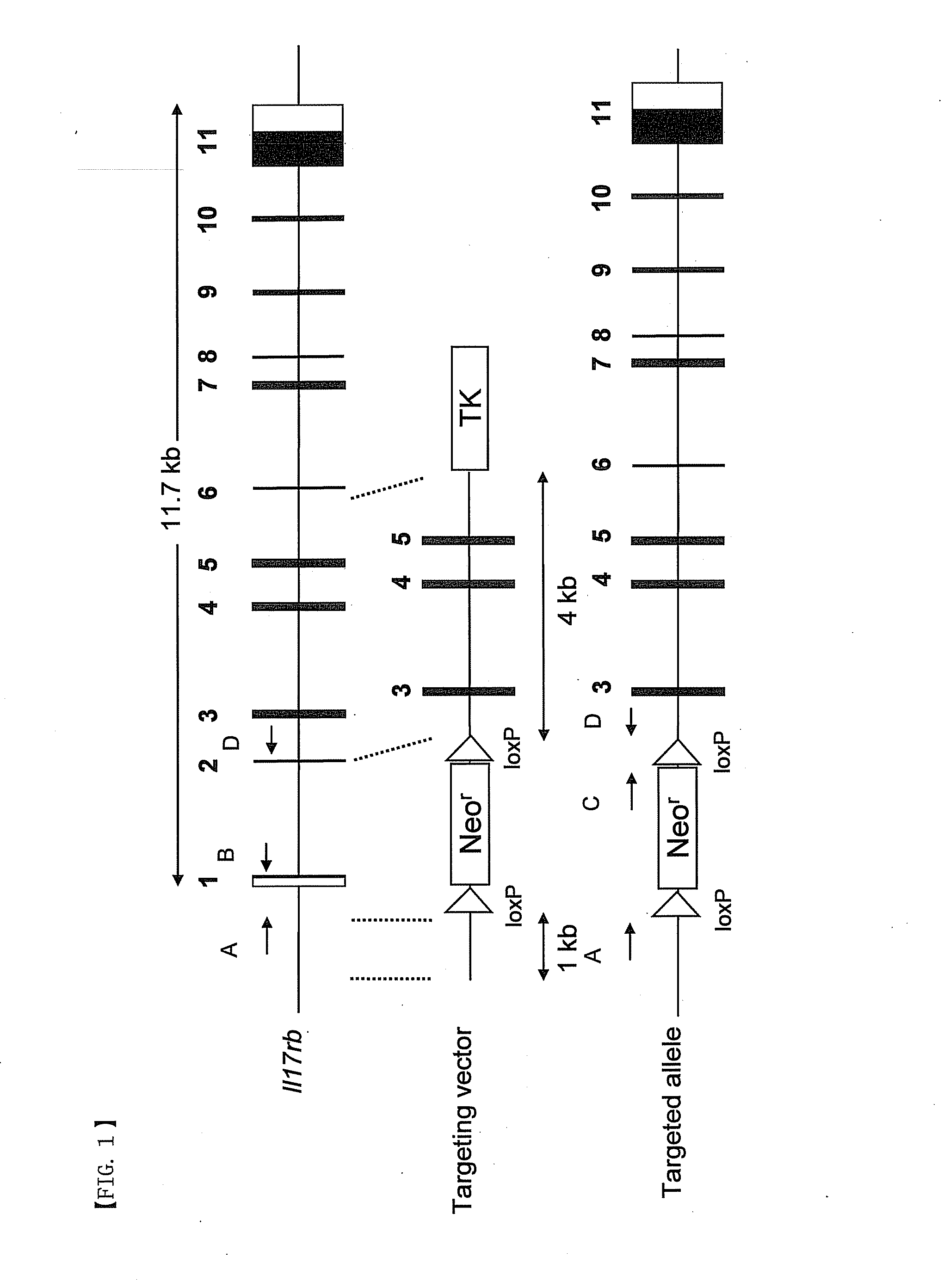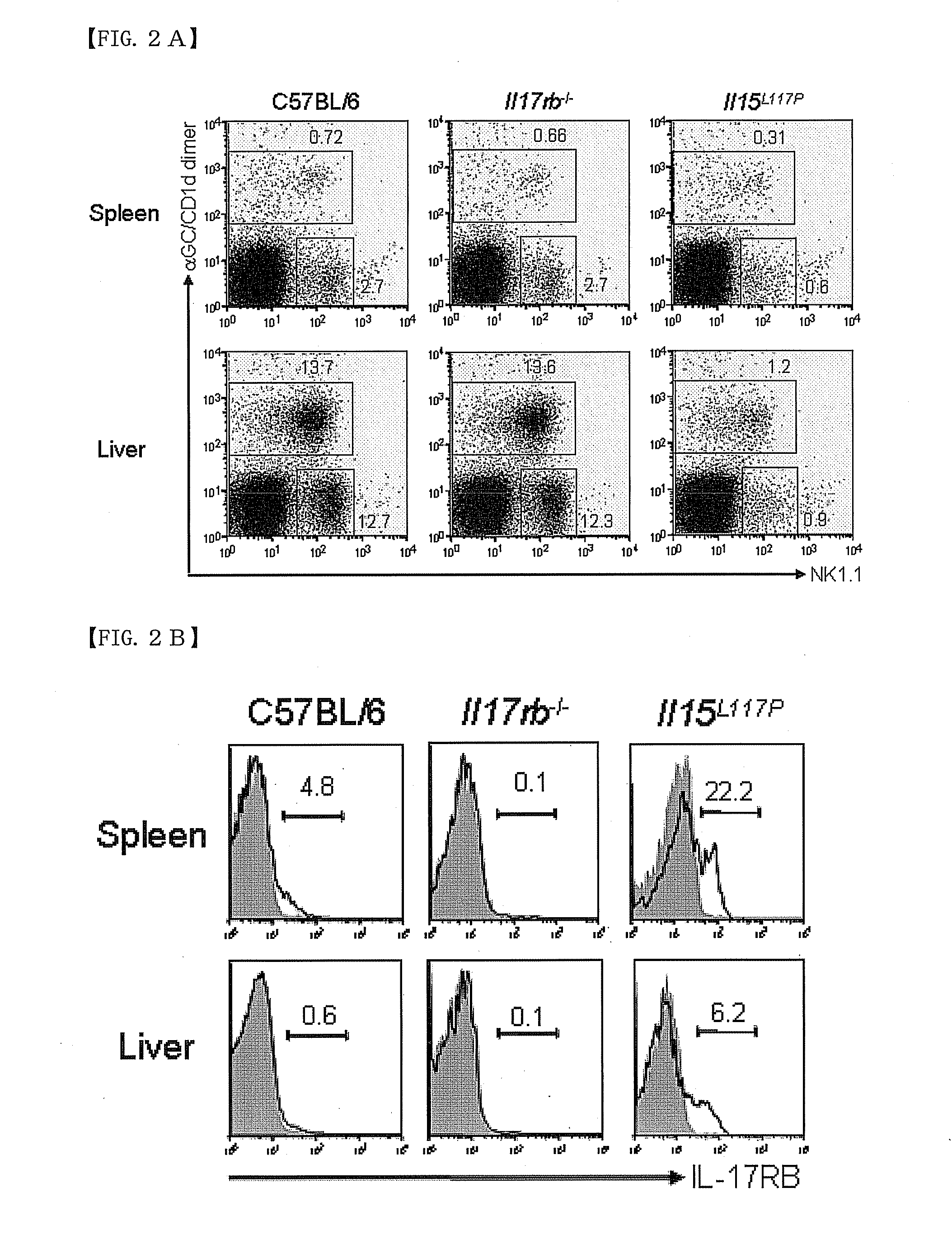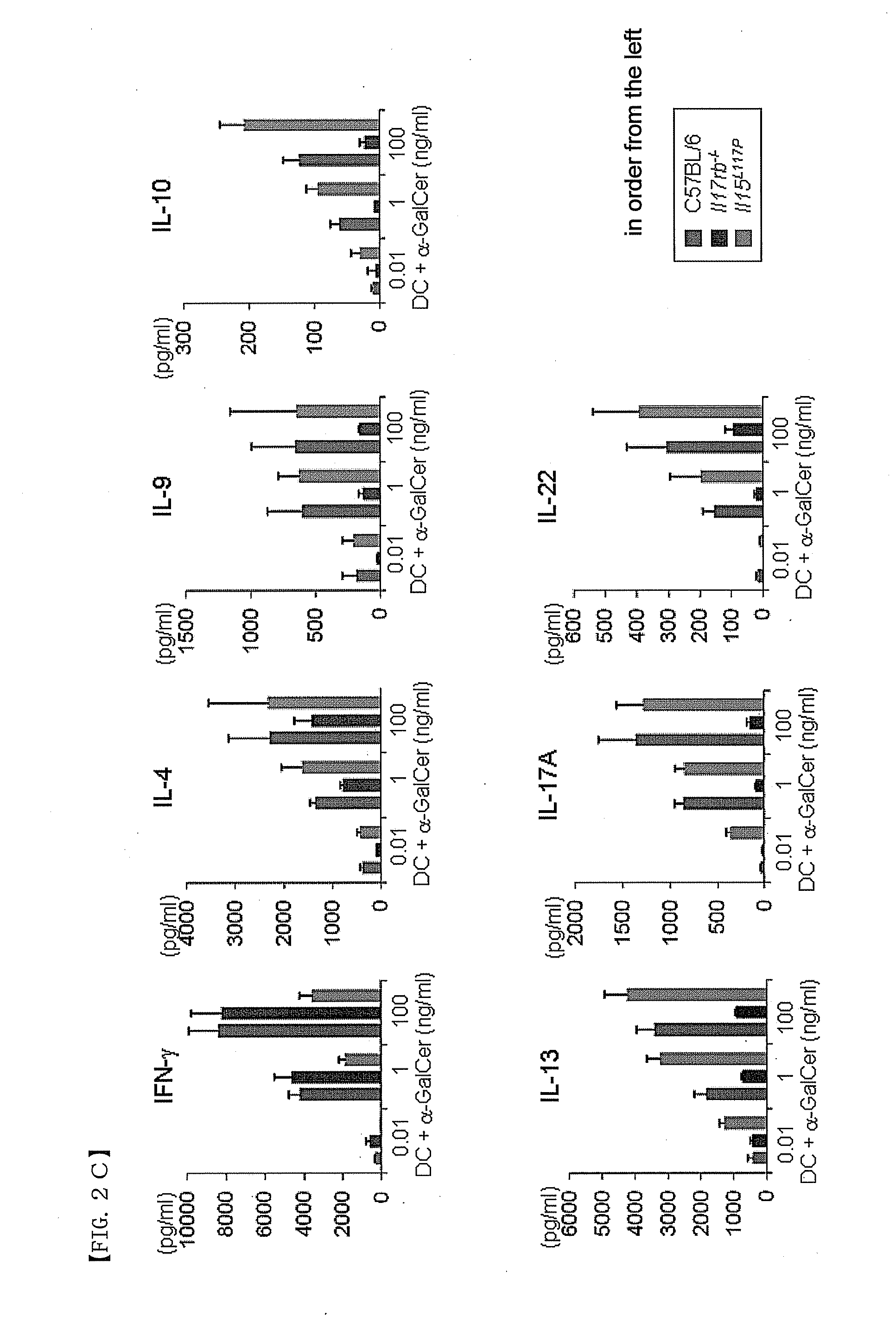Therapeutic agent of non-allergic airway inflammation and/or non-allergic hyperresponsive airway
a therapeutic agent and non-allergic technology, applied in the direction of antibody medical ingredients, peptide/protein ingredients, instruments, etc., can solve the problems of difficult cure and remission of cases, and cases that cannot be explained solely, and achieve the effect of exacerbating non-allergic airway hyperreactivity or non-allergic airway inflammation
- Summary
- Abstract
- Description
- Claims
- Application Information
AI Technical Summary
Benefits of technology
Problems solved by technology
Method used
Image
Examples
example 1
Preparation of IL-17RB Deficient Mice and Evaluation of NKT Cells
[0118]With regard to IL-17RB gene showing NKT cell subgroup-specific expression in a steady state, a targeting vector was constructed such that exon1 and exon2 on the mouse genome were deficient (FIG. 1), and gene targeting in ES cells was performed. Insertion into an object site was confirmed by genomic PCR. The mouse line was established by mating C57BL / 6 or Balb / c mice for 8 generations or more to finally establish IL-17RB deficient mice of C57BL / 6 or Balb / c background.
[0119]As IL-15 mutant mice (IL-15L117P mice), the mice established by chemical mutagen ENU (N-ethyl-N-nitrosourea)-induced mutation (Masuya H, et al. (2004) Development and implementation of a database system to manage a large-scale mice ENU-mutagenesis program. Mamm Genome 15: 404-411 (2004); Yoshida Y, et al. (2009) PosMed (Positional Medline): prioritizing genes with an artificial neural network comprising medical documents to accelerate positional...
example 2
Mechanism of Occurrence of Differentiation of IL-17RB Positive NKT Cells
[0126]NKT cells are known to differentiate in the thymus same as T cells. To clarify whether the subtype group IL-17RB positive NKT cells also differentiate in the thymus (or differentiate in the periphery), NKT cells in the thymus were analyzed. Like the peripheral NKT cells described in Example 1, the proportion of thymic NKT cells scarcely decreased (FIG. 3A). NKT cells were concentrated with MACS beads, and the expression state of NK1.1 and CD44 was confirmed. As a result, in wild-type mice, 3 stages of thymic differentiation considered so far, that is, CD44 negative NK1.1 negative (stage 1), CD44 positive NK1.1 negative (stage 2), and CD44 positive NK1.1 positive (stage 3) could be confirmed, whereas the proportion of stages 1 and 2 decreased in IL-17RB deficient mice, and the proportion of stage 3 decreased in IL-15 mutant mice (FIG. 3B). Therefore, since an inversely-correlated cell decrease is found in I...
example 3
Gene Expression of Thymus NKT Cells
[0131]As indicated in Example 2, it was suggested that thymus NKT cells do not transit from stage 1→2→3, but cell populations of IL-17RB positive (mainly stages 1 and 2) and IL-17RB negative (stage 3) are separately present. To analyze in more detail the functional differences between them, the cells were divided into 4 fractions using the expression of CD4 and IL-17RB on the cell surface as an index, and the gene expression thereof was analyzed by quantitative PCR.
[0132]The prepared cells had high purity in view of the expression of CD4 and IL-17RB and, as clarified in Example 2, IL-15 receptor β chain (Il2rb) showed localized expression in IL-17RB negative NKT cells (FIG. 6A).
[0133]Then, Th1 / Th2 / Th17 cytokine production was examined.
[0134]IFN-γ (Ifng), T-bet (Tbx21), and STAT4 (Stat4), which are
[0135]Th1-related genes, showed localized expression in IL-17RB negative NKT subtype (FIG. 6B, upper panel). IL-17A(Il17a), IL-22(Il22), and RORγt (Rorc),...
PUM
| Property | Measurement | Unit |
|---|---|---|
| time | aaaaa | aaaaa |
| time | aaaaa | aaaaa |
| weight | aaaaa | aaaaa |
Abstract
Description
Claims
Application Information
 Login to View More
Login to View More - R&D
- Intellectual Property
- Life Sciences
- Materials
- Tech Scout
- Unparalleled Data Quality
- Higher Quality Content
- 60% Fewer Hallucinations
Browse by: Latest US Patents, China's latest patents, Technical Efficacy Thesaurus, Application Domain, Technology Topic, Popular Technical Reports.
© 2025 PatSnap. All rights reserved.Legal|Privacy policy|Modern Slavery Act Transparency Statement|Sitemap|About US| Contact US: help@patsnap.com



